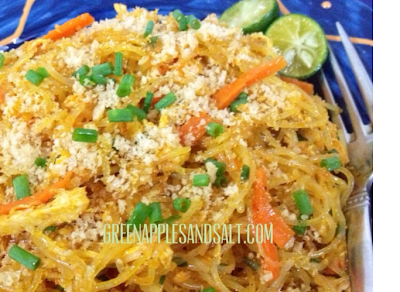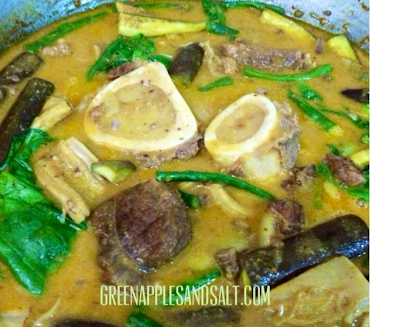Sometimes you just have to go back to the classics. Like
with this Oatmeal Raisin Cookie.
Crunchy oats with chewy raisins will always be a timeless
treat. If you can’t decide between a crunchy or chewy type of cookie, then this
cookie is for you. At first bite, the crunch hits you, then a pleasant
chewiness follows. How’s that for a
cookie?! :)
When I scour recipes on the internet, I’m always on the look
out for the not too sweet treats or I
simply lessen the sugar content of what is originally posted in the
recipe. Sometimes, I fail in just
hitting the spot for the desired sweetness. It would either be still too sweet or too bland. But not in this cookie. The original recipe says firmly packed dark brown
sugar, but I just lightly spooned some on the cup and simply leveled it off
with a knife. Glad I did!
So this is a not too sweet cookie with just the right crunch
and chewiness. Could this still get any
better? Yay! This cookie is packed with
the goodness of oats. Because oats are fiber packed, we simply feel full easily
and stay full for a long time (If you are trying to lose weight, then eating oats regularly is a must). Even
our daily morning “ritual” goes on easily! It has also been
proven that oats lower blood pressure while lowering bad cholesterol.
If you decide to make these cookies, I assure you that you
won’t regret it. These cookies freeze
well but you have to reheat it in the
oven for several minutes or in an oven
toaster if you want them to still be crunchy on the outside. Enjoy with a tall glass of milk, coffee, or tea. If you have to or just want to be gluten free, try the gluten free Oatmeal CookieBites. Either recipe is delicious and
nutritious. Happy munching!
Oatmeal Raisin Cookies
(adapted from Sweet Savory Life)
Ingredients:
1 cup butter,
softened
1 cup dark brown sugar (lightly spooned)
1/2 cup granulated sugar
2 eggs
1 teaspoon vanilla
1-1/2 cups all-purpose flour
1 teaspoon baking soda
1/2 teaspoon baking powder
1 teaspoon ground cinnamon
1/4 teaspoon nutmeg
1/2 teaspoon salt
3 cups oats (I used 1 ½ c rolled oats plus 1 ½ c quick cooking oats)
¾ - 1 cup raisins ( I used just ¾ cup depending on your preference)
1/2 cup granulated sugar
2 eggs
1 teaspoon vanilla
1-1/2 cups all-purpose flour
1 teaspoon baking soda
1/2 teaspoon baking powder
1 teaspoon ground cinnamon
1/4 teaspoon nutmeg
1/2 teaspoon salt
3 cups oats (I used 1 ½ c rolled oats plus 1 ½ c quick cooking oats)
¾ - 1 cup raisins ( I used just ¾ cup depending on your preference)
Directions:
1. Preheat oven at 350 F.
2. Combine dry
ingredients together- flour,baking soda, baking powder, cinnamon,
nutmeg, and salt
in a bowl. Mix very well.
3. In a separate bowl at medium speed, cream butter and
sugars for 3 minutes.
2. Add eggs and vanilla. Beat until well combined.
3. At low speed, add flour mixture to butter/sugar/egg
mixture. Mix well.
4. Stir in oats and raisins.
5. For uniform cookies, I suggest using a small ice cream
scooper. Or drop by rounded
tablespoonfuls on parchment paper lined sheets.
6. Bake 12 – 15 minutes or until sides of cookies are golden brown.
7. Let cookies remain on cookie sheet for 2 minutes, then transfer to a wire rack to cool completely.
7. Let cookies remain on cookie sheet for 2 minutes, then transfer to a wire rack to cool completely.






